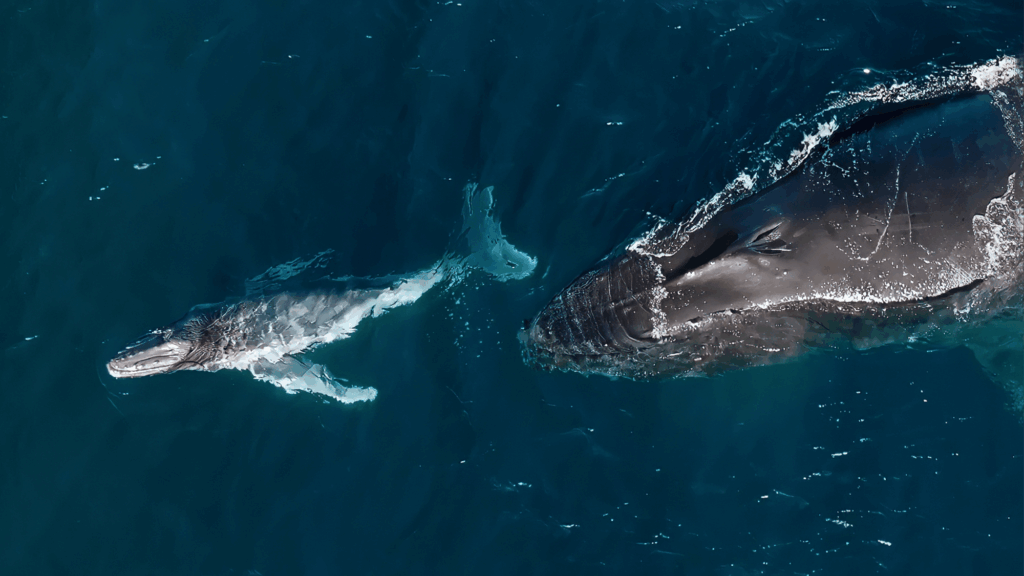Humpback whales, known for their incredible migratory journeys, have surprised researchers with new findings about their calving habits. While some populations of humpback whales travel thousands of miles each year from colder waters to warmer tropical waters to give birth and care for their calves, a recent study off Australia’s eastern coast has revealed that this may not be the case for all humpback populations.
The research, detailed in a study published in the journal Frontiers in Marine Science, indicates that calves in this particular population can be born in colder waters near New Zealand or Tasmania, challenging previous beliefs about humpback migration patterns. This discovery could lead to improved protection areas for these vulnerable baby whales.
Marine ecologist Tracey Rogers, a co-author of the study from the University of New South Wales, highlighted the significance of this finding, noting that the calves born along the “humpback highway” are required to swim long distances at a young age, posing potential risks to their survival.
In the Northern Hemisphere, humpback whales typically migrate from colder feeding grounds in the summer to warmer waters in the Caribbean for breeding and calving. In the Southern Hemisphere, humpback whales travel from the Southern Ocean around Antarctica to the Pacific Ocean off Australia to breed and care for their young.
The discovery of this new calving range was made by Ph.D candidate Jane McPhee-Frew during a whale-watching tour, where she encountered a mother and calf near Newcastle Harbor in Eastern Australia. This sighting sparked further investigation into the calving habits of humpback whales in the region, using data from citizen science observations, government surveys, and reported strandings.
The researchers found records of newborn calves, strandings, and live calf observations, indicating that humpback whales continue to migrate north after giving birth. These findings shed light on the historical behaviors of humpback whales and the impact of past hunting practices on their populations.
While the study cannot definitively explain why humpback whales continue to migrate if they can give birth further south, it suggests that other factors may be driving their movements. Conservation implications of these findings include the need for expanded protected areas, awareness campaigns, and further research into humpback whale habitats to safeguard the calves.
Overall, this study highlights the importance of ongoing research and conservation efforts to protect and preserve humpback whale populations and their unique migration patterns. As we travel further north, it may seem that we encounter more whale calves, or perhaps it appears that their numbers have increased over time. However, this phenomenon could be attributed to the rise in whale-watching activities in northern regions or the proliferation of cameras and social media platforms in recent years.
Vanessa Pirotta, a co-author of the study from Macquarie University in Australia, emphasized the importance of documenting what is observed. She suggested that there may be ongoing events in the ocean that have yet to be discovered.
It is essential to consider the influence of human activities, such as increased whale-watching tours and the widespread use of social media, on our perception of whale calf sightings. While it may seem like there are more calves in certain areas, it is crucial to approach such observations with a critical mindset and consider the potential factors at play.
As we continue to explore and study marine life, it is essential to remain open to new discoveries and insights that may challenge our existing perceptions. The ocean is a vast and complex ecosystem, and there is still much to learn about the behavior and population dynamics of whales and other marine species. By staying curious and vigilant in our research efforts, we can uncover valuable information that contributes to the conservation and protection of these magnificent creatures.

